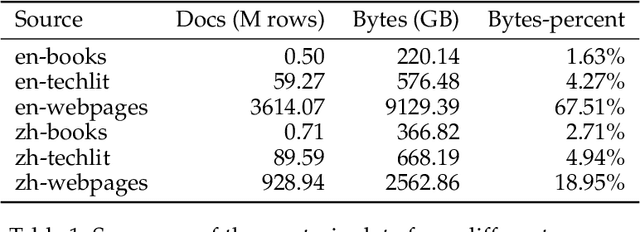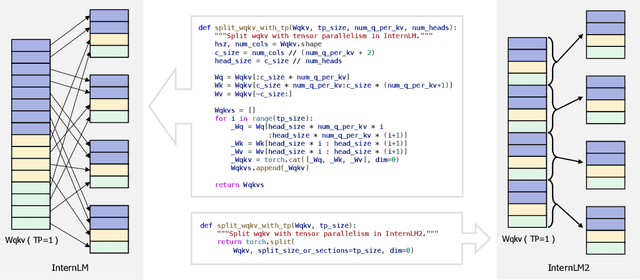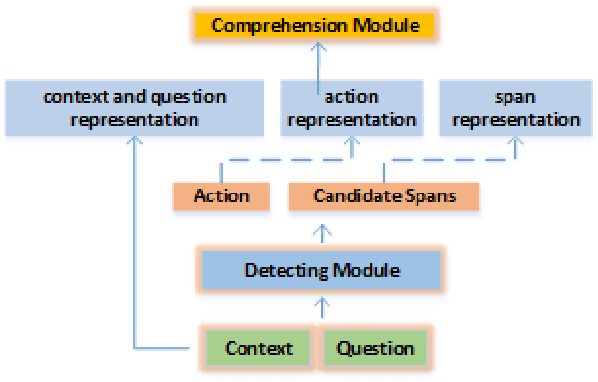Jiangning Liu
Exploring the Limit of Outcome Reward for Learning Mathematical Reasoning
Feb 10, 2025Abstract:Reasoning abilities, especially those for solving complex math problems, are crucial components of general intelligence. Recent advances by proprietary companies, such as o-series models of OpenAI, have made remarkable progress on reasoning tasks. However, the complete technical details remain unrevealed, and the techniques that are believed certainly to be adopted are only reinforcement learning (RL) and the long chain of thoughts. This paper proposes a new RL framework, termed OREAL, to pursue the performance limit that can be achieved through \textbf{O}utcome \textbf{RE}w\textbf{A}rd-based reinforcement \textbf{L}earning for mathematical reasoning tasks, where only binary outcome rewards are easily accessible. We theoretically prove that behavior cloning on positive trajectories from best-of-N (BoN) sampling is sufficient to learn the KL-regularized optimal policy in binary feedback environments. This formulation further implies that the rewards of negative samples should be reshaped to ensure the gradient consistency between positive and negative samples. To alleviate the long-existing difficulties brought by sparse rewards in RL, which are even exacerbated by the partial correctness of the long chain of thought for reasoning tasks, we further apply a token-level reward model to sample important tokens in reasoning trajectories for learning. With OREAL, for the first time, a 7B model can obtain 94.0 pass@1 accuracy on MATH-500 through RL, being on par with 32B models. OREAL-32B also surpasses previous 32B models trained by distillation with 95.0 pass@1 accuracy on MATH-500. Our investigation also indicates the importance of initial policy models and training queries for RL. Code, models, and data will be released to benefit future research\footnote{https://github.com/InternLM/OREAL}.
MindSearch: Mimicking Human Minds Elicits Deep AI Searcher
Jul 29, 2024



Abstract:Information seeking and integration is a complex cognitive task that consumes enormous time and effort. Inspired by the remarkable progress of Large Language Models, recent works attempt to solve this task by combining LLMs and search engines. However, these methods still obtain unsatisfying performance due to three challenges: (1) complex requests often cannot be accurately and completely retrieved by the search engine once (2) corresponding information to be integrated is spread over multiple web pages along with massive noise, and (3) a large number of web pages with long contents may quickly exceed the maximum context length of LLMs. Inspired by the cognitive process when humans solve these problems, we introduce MindSearch to mimic the human minds in web information seeking and integration, which can be instantiated by a simple yet effective LLM-based multi-agent framework. The WebPlanner models the human mind of multi-step information seeking as a dynamic graph construction process: it decomposes the user query into atomic sub-questions as nodes in the graph and progressively extends the graph based on the search result from WebSearcher. Tasked with each sub-question, WebSearcher performs hierarchical information retrieval with search engines and collects valuable information for WebPlanner. The multi-agent design of MindSearch enables the whole framework to seek and integrate information parallelly from larger-scale (e.g., more than 300) web pages in 3 minutes, which is worth 3 hours of human effort. MindSearch demonstrates significant improvement in the response quality in terms of depth and breadth, on both close-set and open-set QA problems. Besides, responses from MindSearch based on InternLM2.5-7B are preferable by humans to ChatGPT-Web and Perplexity.ai applications, which implies that MindSearch can already deliver a competitive solution to the proprietary AI search engine.
InternLM2 Technical Report
Mar 26, 2024



Abstract:The evolution of Large Language Models (LLMs) like ChatGPT and GPT-4 has sparked discussions on the advent of Artificial General Intelligence (AGI). However, replicating such advancements in open-source models has been challenging. This paper introduces InternLM2, an open-source LLM that outperforms its predecessors in comprehensive evaluations across 6 dimensions and 30 benchmarks, long-context modeling, and open-ended subjective evaluations through innovative pre-training and optimization techniques. The pre-training process of InternLM2 is meticulously detailed, highlighting the preparation of diverse data types including text, code, and long-context data. InternLM2 efficiently captures long-term dependencies, initially trained on 4k tokens before advancing to 32k tokens in pre-training and fine-tuning stages, exhibiting remarkable performance on the 200k ``Needle-in-a-Haystack" test. InternLM2 is further aligned using Supervised Fine-Tuning (SFT) and a novel Conditional Online Reinforcement Learning from Human Feedback (COOL RLHF) strategy that addresses conflicting human preferences and reward hacking. By releasing InternLM2 models in different training stages and model sizes, we provide the community with insights into the model's evolution.
Agent-FLAN: Designing Data and Methods of Effective Agent Tuning for Large Language Models
Mar 19, 2024Abstract:Open-sourced Large Language Models (LLMs) have achieved great success in various NLP tasks, however, they are still far inferior to API-based models when acting as agents. How to integrate agent ability into general LLMs becomes a crucial and urgent problem. This paper first delivers three key observations: (1) the current agent training corpus is entangled with both formats following and agent reasoning, which significantly shifts from the distribution of its pre-training data; (2) LLMs exhibit different learning speeds on the capabilities required by agent tasks; and (3) current approaches have side-effects when improving agent abilities by introducing hallucinations. Based on the above findings, we propose Agent-FLAN to effectively Fine-tune LANguage models for Agents. Through careful decomposition and redesign of the training corpus, Agent-FLAN enables Llama2-7B to outperform prior best works by 3.5\% across various agent evaluation datasets. With comprehensively constructed negative samples, Agent-FLAN greatly alleviates the hallucination issues based on our established evaluation benchmark. Besides, it consistently improves the agent capability of LLMs when scaling model sizes while slightly enhancing the general capability of LLMs. The code will be available at https://github.com/InternLM/Agent-FLAN.
T-Eval: Evaluating the Tool Utilization Capability of Large Language Models Step by Step
Jan 15, 2024Abstract:Large language models (LLM) have achieved remarkable performance on various NLP tasks and are augmented by tools for broader applications. Yet, how to evaluate and analyze the tool-utilization capability of LLMs is still under-explored. In contrast to previous works that evaluate models holistically, we comprehensively decompose the tool utilization into multiple sub-processes, including instruction following, planning, reasoning, retrieval, understanding, and review. Based on that, we further introduce T-Eval to evaluate the tool utilization capability step by step. T-Eval disentangles the tool utilization evaluation into several sub-domains along model capabilities, facilitating the inner understanding of both holistic and isolated competency of LLMs. We conduct extensive experiments on T-Eval and in-depth analysis of various LLMs. T-Eval not only exhibits consistency with the outcome-oriented evaluation but also provides a more fine-grained analysis of the capabilities of LLMs, providing a new perspective in LLM evaluation on tool-utilization ability. The benchmark will be available at https://github.com/open-compass/T-Eval.
Action based Network for Conversation Question Reformulation
Nov 29, 2021



Abstract:Conversation question answering requires the ability to interpret a question correctly. Current models, however, are still unsatisfactory due to the difficulty of understanding the co-references and ellipsis in daily conversation. Even though generative approaches achieved remarkable progress, they are still trapped by semantic incompleteness. This paper presents an action-based approach to recover the complete expression of the question. Specifically, we first locate the positions of co-reference or ellipsis in the question while assigning the corresponding action to each candidate span. We then look for matching phrases related to the candidate clues in the conversation context. Finally, according to the predicted action, we decide whether to replace the co-reference or supplement the ellipsis with the matched information. We demonstrate the effectiveness of our method on both English and Chinese utterance rewrite tasks, improving the state-of-the-art EM (exact match) by 3.9\% and ROUGE-L by 1.0\% respectively on the Restoration-200K dataset.
 Add to Chrome
Add to Chrome Add to Firefox
Add to Firefox Add to Edge
Add to Edge